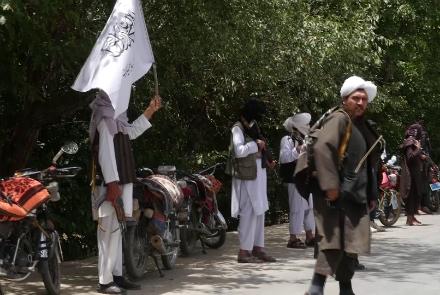Afghanistan has entered a qualitatively new stage in its complex political and social life. The unceasing 40-year-old war has turned the once prosperous eastern country into a ‘safe haven’ for terrorists, making it one of the most backward and poorest territories in the world. Negotiations with the Taliban, which theoretically can change the face of modern Afghanistan and decrease violence, has finally begun. The Taliban talks are the only possible way to reduce tensions and outrage in this country.
Nowadays the situation is chronically tough. At the same time, the apocalypse - repetition of the 1996 events - is not expected. Under no circumstances can the Taliban seize Kabul, the whole country, or restore the Islamic Emirate. There is also no reason to believe that the Afghan authorities would be able to annihilate the radical movement. The Taliban along with the allied Haqqani network and scattered militant groups of several thousand people who regulate their ties with the Islamic State (Daesh) control about 40% of Afghanistan. Terrorist attacks have long become common, the number of victims from explosions began to reach hundreds. Previously the movement controlled countryside. U.S. President George W. Bush once said: “Where the roads end, the Taliban begin.”
Now extremists have come to the cities. The most protected areas such as the elite Wazir Akbar Khan area in Kabul where embassies and international organizations located are under attacks. There is enormous influence of the Taliban in the southeastern provinces. With the withdrawal of most American troops in 2014–2015 the range the radicals influence spread was like liquid spilled on a flat floor. There are separate centers of Taliban control throughout the country.
In addition, the United States made it clear: an expansion of presence and seizure of new provincial centers will be met by pinpoint air strikes. In other words the Afghan counterparties and the Americans de facto divided zones of influence. Authorities control major cities, the Taliban - countryside as well as a lion’s share of southeastern provinces. The ‘field commanders’ stand apart keeping their share of the Afghan pie. Simultaneously, the parties are waging war in the ‘disputed zones’ where neither the movement nor Kabul gains enough authority. Recently the influence of the Taliban began to occur in the northern part where they were not commonly favored.
That said the situation in Afghanistan has been desperate for quite a long time. The Afghan campaign has reached its logical dead end. Economists have a term ‘palliative economy’ - when it comes not to a development but reduction of destructive circumstances. So the U.S. policy in Afghanistan has become palliative so far.
Last August President Donald Trump announced a new strategy. This happened as part of his address to the nation that emphasized special importance of the Afghan campaign. In a 25-minute speech the head of the White House recalled the reasons (9/11 attacks) for the longest-running war in American history listing main paradigms of the new American approach to Afghanistan. For several months the document had been written by the Pentagon along with the intelligence community - the CIA in particular - and the State Department. Over the past two months American experts wrote a few hundred analytical notes trying to suggest most optimal ways out of the current impasse. Overall the document turned out quite good, it contains important points that can help decrease the level of violence.
However, the strategy has not become a panacea, it failed to rectify and stabilize the state of Afghan affairs. It is obvious that military methods have not justified themselves. Yet Trump’s strategy focuses on ‘guys in uniform’. The document also cancelled the time limits set by the 44th President of the United States Barack Obama, stating the exact date of military withdrawal. Now the Taliban will not be able to hide in caves waiting for the departure of the American contingent. An important aspect of the strategy was America focusing on military ways. “We are not asking others to change their way of life,” said Donald Trump.
It is hard to say why the Afghan campaign turned the wrong way as the United States used to be successful in the early 2000s. There are many reasons for this, but one can be instantly recalled. It was the formation of Afghan society according to western patterns and the process of state-building which became the basis for destabilization and growth of extremism. 17 years later the Americans eventually got an understanding that Afghanistan would never become a Switzerland. The strategy says, “We are not nation-building again. We are killing terrorists.”
The document did not mention the most important aspect - inter-ethnic contradictions between Pashtuns, Tajiks, Uzbeks, and Hazaras. It is the war between different ethnopolitical strata that is a generator of destabilization. The stronger one becomes, the more rigidly others respond.
Earlier this year Afghan President Ashraf Ghani announced his willingness to begin talks with the Taliban. In turn, the United States is ready to join direct negotiations with the Taliban in order to put an end to the 17-year war in Afghanistan.
This was announced by a four-star general, former commander of the U.S. and NATO contingent in Afghanistan Gen John Nicholson. “Our Secretary of State, Mr. Pompeo, has said that we, the United States, are ready to talk to the Taliban and discuss the role of international forces,” he said. “We hope that they realize this and that this will help to move forward the peace process.” Pompeo also stated that Washington is ready to engage in direct negotiations with the Taliban but reiterated that the peace process would be led by the government of Afghanistan.
Earlier the New York Times reported that the administration of President Donald Trump had instructed U.S. diplomats and intelligence officers to start direct talks with the movement.
Thus, Washington and Kabul have begun negotiations with the Taliban which is an important and necessary process for ending the war.

Georgi Asatryan, Ph.D., is a scholar, Senior Lecturer at the Russian State University for Humanities, a special correspondent for Izvestia, and an expert on Middle East policy. @alorientalist

